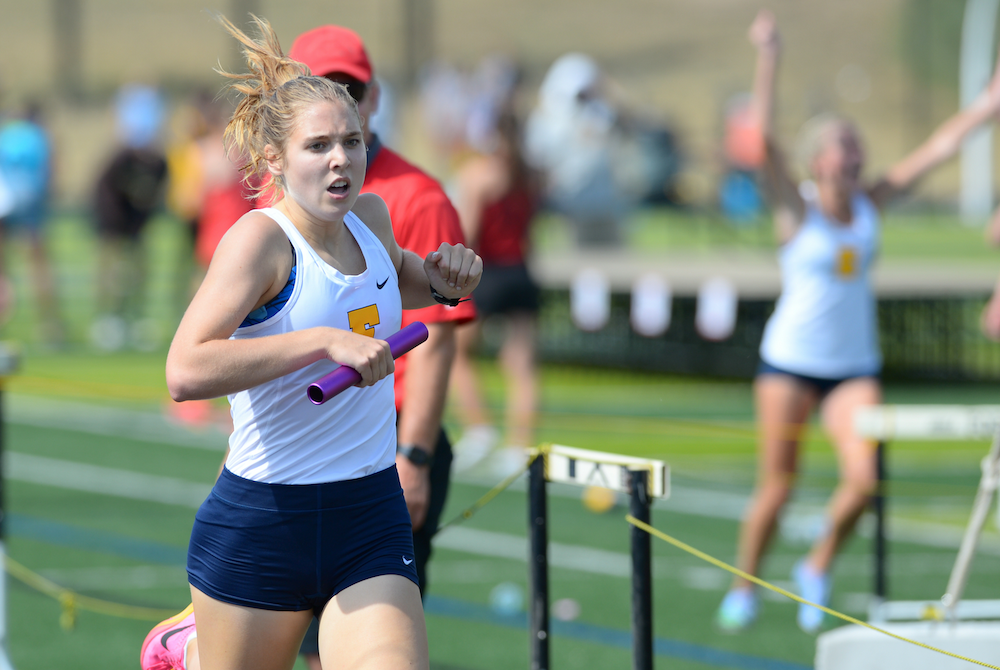
Grosse Ile's Molnar Wins Title in 2nd Sport, EGR Top Team for 2nd-Straight Year
By
Steve Vedder
Special for MHSAA.com
June 3, 2023
ADA – The only common denominator that Kaitlyn Molnar can think of between her two sports is that brief feeling of pure freedom as she soars through the air.
The big difference, of course, is that one comes in a swimming pool and the other while hurling herself along a long jump pit.
The Grosse Ile junior added a state long jump title to a state diving championship at Saturday's Lower Peninsula Division 2 Track & Field Finals at Forest Hills Eastern. The long jump win came after Molnar won a Division 3 diving title in the fall and followed a fifth-place finish in the long jump as a sophomore.
While the necessary talents for both sports may seem incompatible, Molnar sees one significant similarity.
"I just love that feeling of being in the air," she said after a jump of 18-feet, 5 inches. "You just take off and go as high as possible. It takes a lot of focus, but I love the long jump.
"It was kind of a surprise, but it was nice to pull it off. (Jumping and diving) are about foot placement and keeping your head up."
While Molnar's individual exploits were impressive, East Grand Rapids successfully defended its team title with 50 points, 16 better than runner-up Sturgis. Mason, New Boston Huron and Otsego tied for third with 26 points. Tecumseh was sixth with 24.
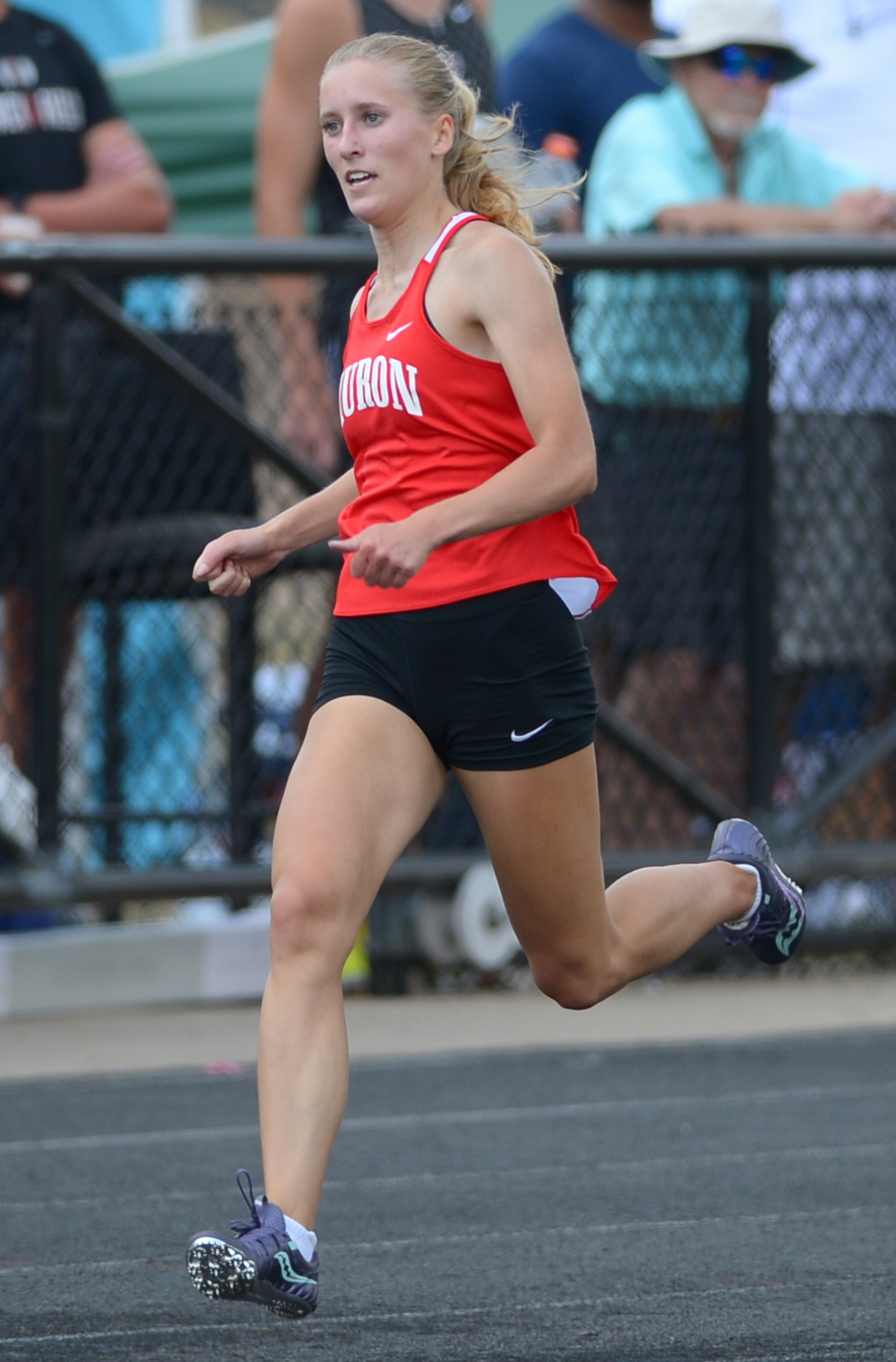 EGR coach Mike Dykstra said the loss of four major point scorers from last season was overcome by depth and young talent stepping up to fill in gaps. But if you had asked the 19-year coach two months ago if the Pioneers had a realistic shot a back-to-back titles, he would have hedged.
EGR coach Mike Dykstra said the loss of four major point scorers from last season was overcome by depth and young talent stepping up to fill in gaps. But if you had asked the 19-year coach two months ago if the Pioneers had a realistic shot a back-to-back titles, he would have hedged.
"Maybe," he said. "We had some good competitors back and a lot of talented young kids trying to fill in spots. Today, I think the (90-plus degree) weather was helpful in a way because it made us focus on the weather as the enemy. It helped us focus on ourselves. It was kind of a blessing in a way."
Among the Pioneers champions was the 3,200 relay team (9:28.17) and the 1,600 relay (3:58.18), while junior Drew Muller repeated in the 1,600 (4:56.01) and senior Camryn Bodine won the 800 (2:11.53).
"There definitely was more pressure this year," she said. "People look out for me just as I look for them. There was awesome competition both years, but I'm happy because I had better times this year. It took a lot of work behind the scenes."
New Boston Huron senior Elizabeth Anderson had a big day that included winning the 400 (55.38). She also was second in both the 100 and 200 and part of the 1,600 relay team. Anderson followed last season's championships in the 200 and 400 and runner-up in the 100. But by at least one measurement, this season was an improvement, she said.
"It was better this year because my times were better," said Anderson, who will run track at Michigan State next season. "I just felt heathier and wanted to finish my season strong. I really wanted to win the 400 because it's my favorite event. That was my goal the whole year. I trained all year to do it."
Other LPD2 champs included Keyanna O'Tey of Sturgis, who won the 100 (11.84). O'Tey said winning the Regional made her realize she could become a Finals champ.
"It's a mindset; I have confidence in myself," she said. There's a lot going on with me right now, but the right people said they have confidence in me and that gave me a positive mindset."
Saginaw Swan Valley's Lyberty Brandt won the high jump in 5 feet, 5 inches. Brandt was second as a junior with a leap of 5-3.
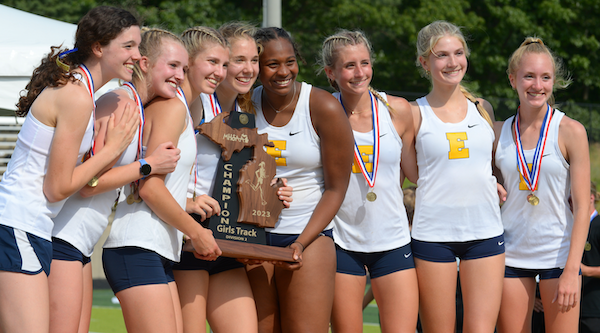 "This was a chance to redeem myself," said Brandt, who swept every high jump event she entered this season. "My dad said this was going to be the year and I just said, 'whatever.' When I went 5-4 in my first event this year ,I thought maybe I could do this. I just trusted myself, the confidence just came."
"This was a chance to redeem myself," said Brandt, who swept every high jump event she entered this season. "My dad said this was going to be the year and I just said, 'whatever.' When I went 5-4 in my first event this year ,I thought maybe I could do this. I just trusted myself, the confidence just came."
Marysville junior Janae Hudson won the shot put with a toss of 42 feet, 7 inches. That followed a 10th in the shot and a third in the discus a year ago. Hudson said the improvement was a matter of fine-tuning technique. She compares throwing the shot to golf in that even the smallest changes can result in a large reward.
"There were very few days when I wasn't working on that," she said. "It was a lot of little things in technique. You fix one little thing and you're better. You have to have the determination to have a good season."
Other champs were the Cadillac 800 relay (1:44.76) and the 400 relay of Berrien Springs (49.32).
Ella Jenkins of Warren Regina won the 100 hurdles (14.64), and Annabelle Densmore of Charlotte the 300 hurdles (45.06). Natalie VanOtteren of Grand Rapids Christian won the 3,200 (10:57.20), Allison Shelton of Ortonville Brandon the pole vault (12 feet) and Haley Guerrant of Otsego the discus (136-11). Sturgis' Jillian Romanyk competed in the adaptive 100 (30.53) and shot put (13-7).
PHOTOS (Top) East Grand Rapids closes in on the 1,600 relay championship Saturday. (Middle) New Boston Huron's Elizabeth Anderson leads the field in the 400. (Below) The Pioneers celebrate their championship. (Photos by Dave McCauley/RunMichigan.com.)
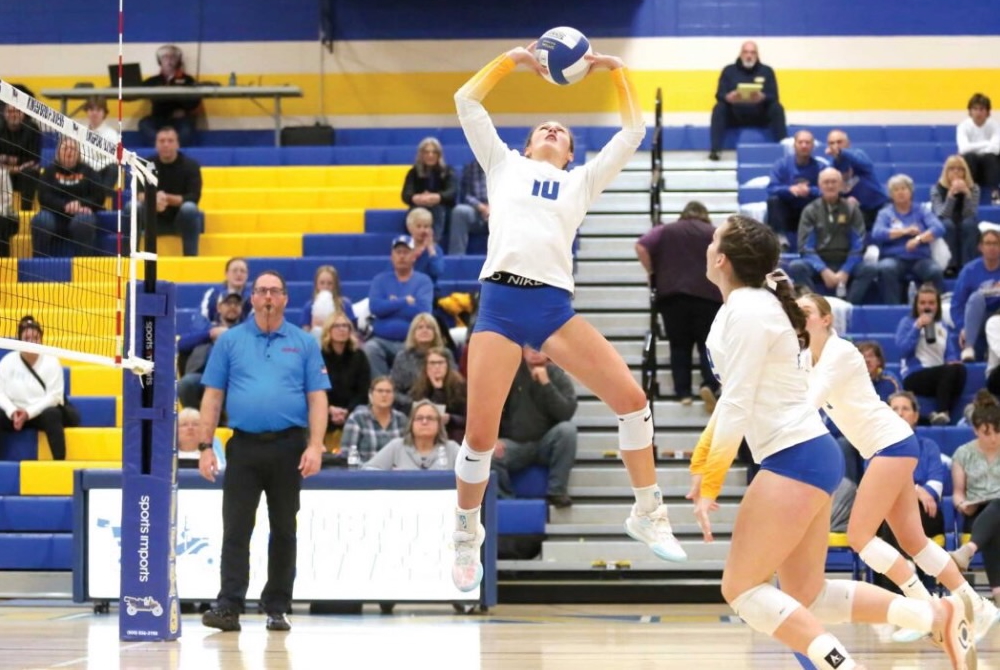
Kingsford's Kreider Prepared for Next Level After Finishing Stellar Flivvers Career
By
John Vrancic
Special for MHSAA.com
June 19, 2025
KINGSFORD — After completing a successful high school volleyball career, Maddy Kreider is ready to take the next step.
 The Kingsford senior is taking her talents to Michigan Tech, where she’s expected to continue primarily as a setter.
The Kingsford senior is taking her talents to Michigan Tech, where she’s expected to continue primarily as a setter.
“That will be a big step for sure, but it’ll be exciting being with the girls,” she said. “The girls are taller in college. It will definitely be an adjustment, physically and mentally. We’ll be traveling longer distances, and it’ll be a matter of improving the mental part of my game.”
Kreider was selected the Upper Peninsula’s Defensive Player of the Year her final two seasons after the U.P. Sportswriters and Sportscasters Association began voting for all-U.P. volleyball.
“That’s quite an accomplishment,” she said. “It’s a real honor playing with girls I grew up with. We had a great season.”
The 5-foot-8 setter was a four-year starter and two-year team captain at Kingsford, leading the Flivvers to three Division 2 District titles and back-to-back undefeated Great Northern Conference championships. She twice was named GNC Player of the Year.
She was also selected all-state first team in the fall and all-state second team in 2023, and all-region throughout her prep career. Her serving percentage also topped .900 throughout her four seasons on varsity.
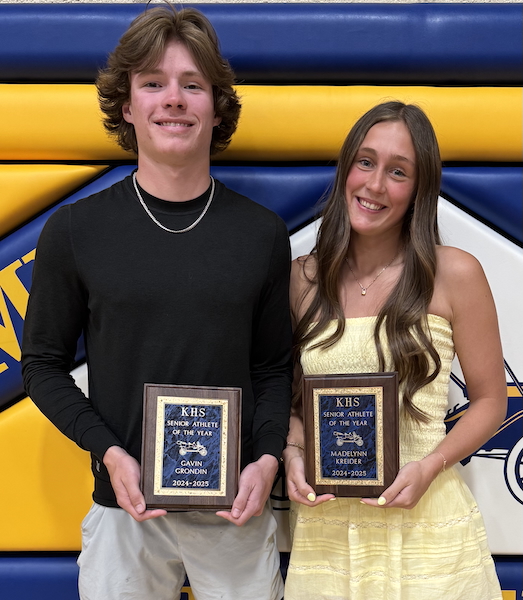 Last fall, the Flivvers reached the Regional Semifinal at Manistique where they dropped a 3-2 decision to Kingsley.
Last fall, the Flivvers reached the Regional Semifinal at Manistique where they dropped a 3-2 decision to Kingsley.
“I thought we’d get through,” Kreider said. “We came out lights out in the first two sets, then it was close in the last three.”
Also among the team’s highlights this past fall was a victory at Calumet, approximately 2½ weeks after dropping a 3-1 decision to the Copper Kings on Kingsford’s home floor.
“We wanted to play them,” Kreider said. “They’re a great bunch of girls to play against. They’ve been the measuring stick up here for many years. Winning on their floor was super exciting. We knew we had to play well just to be competitive. That was a great confidence builder for our group. We were definitely on a high going into the District.”
The Flivvers opened their postseason with a 3-1 triumph over Houghton, then defeated Escanaba in straight sets in the District Final.
Kreider will join Calumet senior Maddie Torola at MTU this fall. Torola, who recorded a season-high 19 kills in the four-set victory at Kingsford, helped the Copper Kings finish 29-5 and reach the Division 3 Regional Final at Sault Ste. Marie where they dropped a 3-2 decision to Traverse City St. Francis.
“It was fun playing against her in high school,” Kreider said. “It will be even more fun playing as teammates. It’ll be exciting to be playing on the same team.”
Both will be playing under new head coach Cindy Pindral at Tech. Both of Kreider’s parents played for the Huskies, her mother (and Kingsford varsity coach) Jaclynn volleyball from 1998-2002 and her father Jason basketball from 1997-2000.
Maddy Kreider recently earned an additional honor when she was selected Female Athlete of the Year for Kingsford’s Class of 2025. She recently completed a solid track & field season for the Flivvers.
At the U.P. Division 1 Finals, Kreider placed fourth in the 100-meter dash (13.2) and anchored the Flivvers to a third-place finish in the 800 relay (1:51.57) and fourth in the 400 (53.03) on their home track.
Kreider was named one of 32 MHSAA/Farm Bureau Insurance Scholar-Athlete Award winners this winter and plans to study exercise science and kinesiology at MTU.
 John Vrancic has covered high school sports in the Upper Peninsula since joining the Escanaba Daily Press staff in 1985. He is known most prominently across the peninsula for his extensive coverage of cross country and track & field that frequently appears in newspapers from the Wisconsin border to Lake Huron. He received the James Trethewey Award for Distinguished Service in 2015 from the Upper Peninsula Sportswriters and Sportscasters Association.
John Vrancic has covered high school sports in the Upper Peninsula since joining the Escanaba Daily Press staff in 1985. He is known most prominently across the peninsula for his extensive coverage of cross country and track & field that frequently appears in newspapers from the Wisconsin border to Lake Huron. He received the James Trethewey Award for Distinguished Service in 2015 from the Upper Peninsula Sportswriters and Sportscasters Association.
PHOTOS (Top) Kingsford’s Maddy Kreider sets for her teammates during a match last season. (Middle) Kreider, right, takes a photo with Kingsford’s Male Athlete of the Year Gavin Grondin. (Photos provided by the Kingsford athletic department.)

